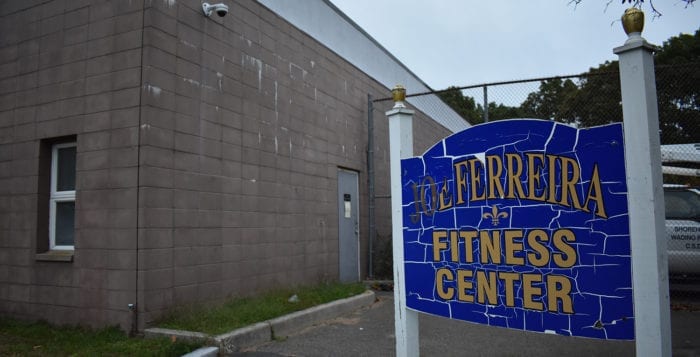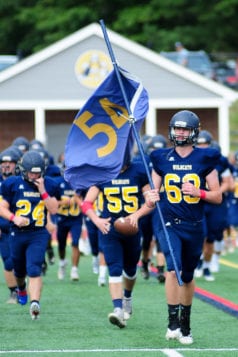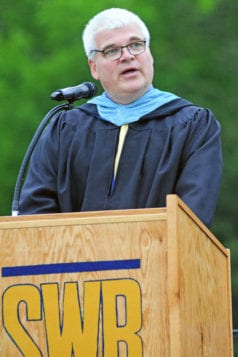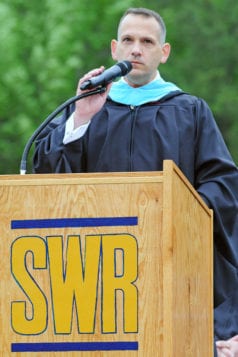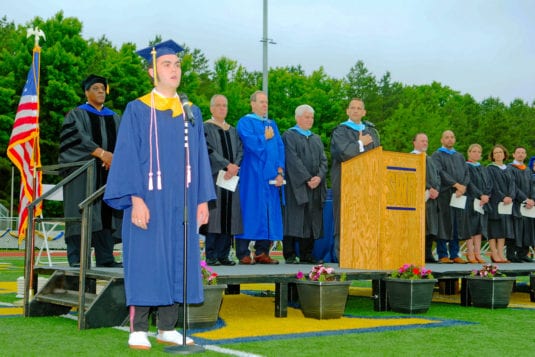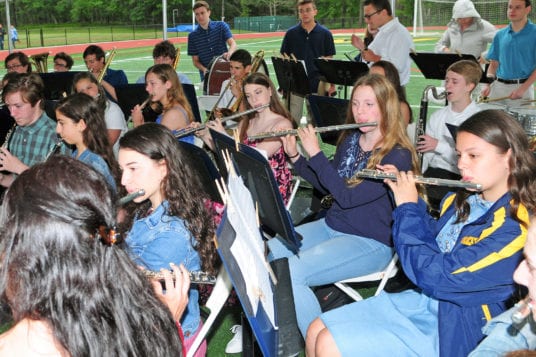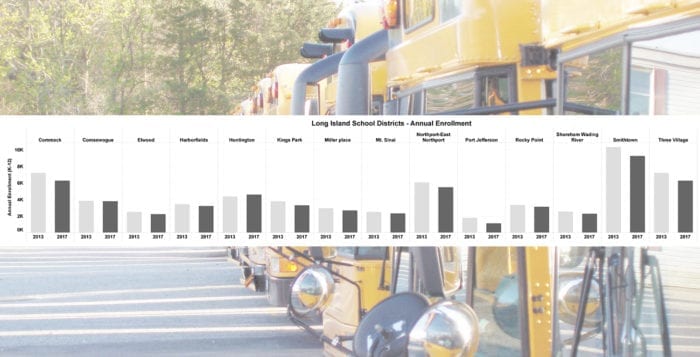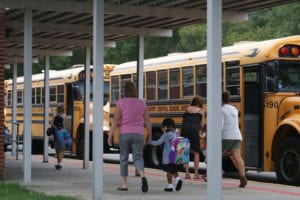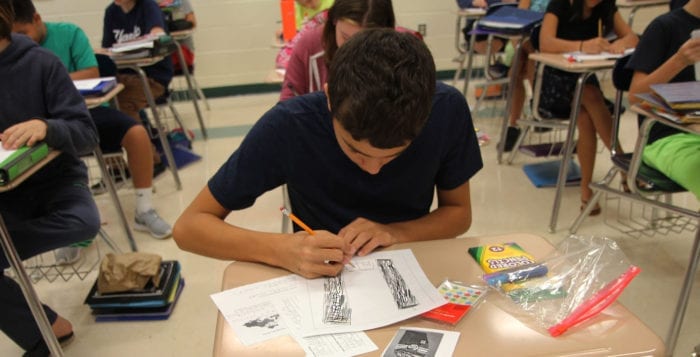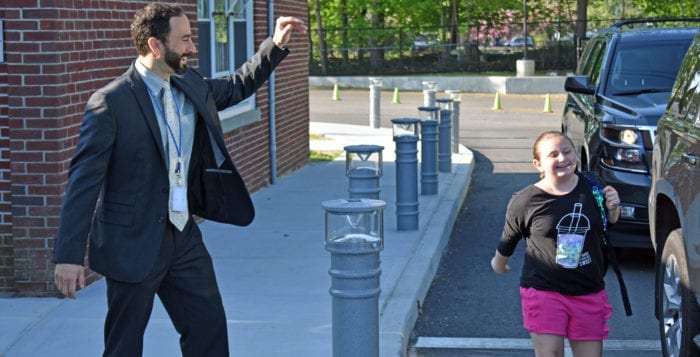Shoreham-Wading River High School students looking to make gains have been impeded with the loss of the school’s fitness center, and now the district is looking at its options for a new one.
The high school’s fitness center, which has been around since the late 1980s and is detached from the main building, was closed down in July this year because an assessment of the building by the school district’s internal engineer showed the flooring was not up to code for constant physical activity.
“The flooring in the fitness area needed structural support in order to meet that code requirements, and the amount came back for that being $200,000 to conduct those repairs,” Superintendent Gerard Poole said. “Over the summer the board asked that we look with our architect to take a look at decision making process alternatives within the school district to make a fitness center or a fitness room.”
With the loss of the old fitness room, the district has moved exercise equipment to room 102, located in close proximity to the high school’s lower floor cafeteria, on the other side of the school from the locker rooms and gymnasium. Current amenities for the temporary facility include a TRX cable-based exercise machine, medicine balls, dumbbells, bench presses and some cardio equipment, according to Poole.
At the SWR Sept. 25 school board meeting members said the district was considering three options. One is to fix the flooring in the old fitness center, which might be the most expensive. Another is to combine rooms 102 and 101 next to the high school cafeteria to create a new 1,400 square foot fitness space. Lastly the district could section off a portion of the auxiliary gym and combine it with an existing storage space to create another 1,400 square foot fitness center.
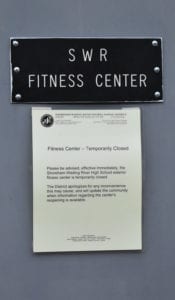
Poole said the district did not have an exact date when they will come to a decision.
“I do not have a deadline, but as always we want to come to a decision as soon as we can,” Poole said. “It’s good to take out time for a decision as long as we’re spending money.”
While replacing the floor would cost $200,000, other options currently seem to cost much less.
Ken Schupner, an architect for Patchogue-based Burton Behrendt Smith Architects, whose services are retained by the school, said it would cost approximately $75,000 to $100,000 to break through the high school’s auxiliary gym to make room for a 14,000 square foot fitness center. Because of the work already done to room 102, extending that space into room 101 should also cost less than patching the old facility’s floor, the architect said.
Board President Michael Lewis questioned whether students will be able to utilize the space if the fitness center is located on the other side of the building from the locker rooms.
“Getting it close to physical education [facilities] is maximizing utilization for the sports teams, and with having it on the lower floor next to the cafeteria are the students really going to travel all the way there to work out?” Lewis said.
Schupner said while the room is located far from the gym, it also has an exit to the outside of the building, making it easier for students to access after practice on the sports fields.
If the school were to opt to use the auxiliary gym, it could disrupt current physical education classes. Poole said five classes are currently scheduled in that room, which is also used extensively by the wrestling and cheerleading teams.
Schupner said renovations to the detached current fitness center are less applicable for state aid compared to facilities located inside the building.
Shoreham resident Robert Badalian regularly used the old fitness center in the hours when it was open to the public, and he and others didn’t want to be left out of the conversation.
“We don’t want to be excluded,” Badalian said. “It was a place for people to exercise and feel comfortable — not be intimidated like you could if you go to another gym.”
Badalian also said he hoped the district would focus more on modernizing the fitness center, saying that compared to high schools like Ward Melville, which have a more modern fitness center, SWR is lagging behind.
Carolyn Baier, another Shoreham resident who was a regular at the fitness center, said having it open to the rest of the community helped get people more involved and in tune with their local school. Baier was on the SWR school board in the 1980s, back when the decision came down to create the fitness center.
“The young people who used it were so nice, they would pick up my weights for me when I hurt my hand,” Baier said. “This was a community thing.”

